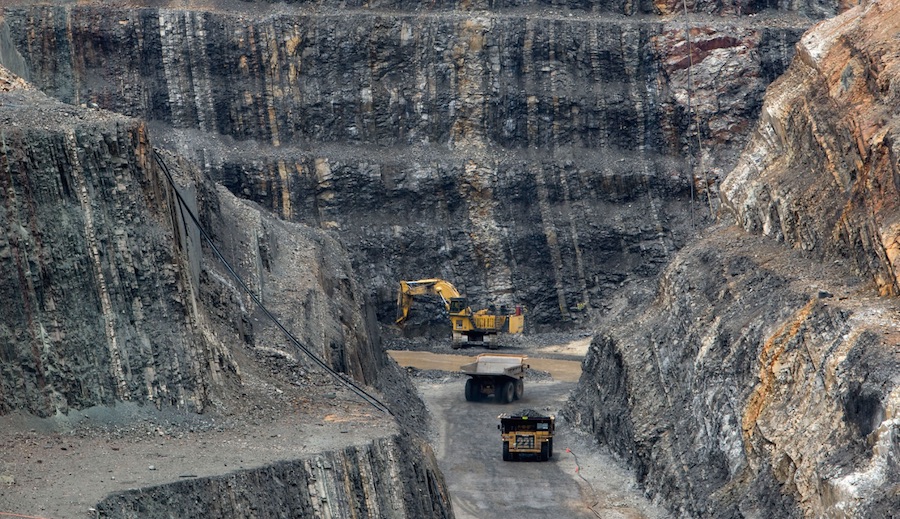McArthur River mine could cost up to $1B to remediate

The McArthur River mine in Australia is looking at a nine-figure clean-up bill, says a new report on one of the world’s largest producers of lead, zinc and silver.
The report by Monash University and the Mineral Policy Institute recommends that the mine stop operating until a public commission is set up and examines whether the mine can be made safe and at what cost, The Guardian reported on Sunday.
According to Gavin Mudd, the author of the report, remediating the site could could cost up to a billion dollars.
The crux of Mudd’s argument is that Glencore’s (LSE:GLEN) plan to leave an open pit is inadequate given the high proportion of acid-forming rock in the waste piles.
As explained by The Guardian:
With that much acid-forming rock, there wouldn’t be enough clay to properly encapsulate the mound and it would leach acid into the environment for years or centuries.
Mudd said the only viable option was to insist the company backfill the pit. He said that would minimise the amount of acid that would leach into the environment in the long term.
McArthur River, located in the Gulf of Carpentaria, has been plagued with environmental and social issues since it began mining in the 1990s. There have been issues with fish and cattle having elevated lead levels; waste piles left to smoulder have given off toxic fumes, disturbing nearby residents.
This time last year Glencore was warned it may have to shut the mine down unless it improves its environmental record and increases a financial bond covering rehabilitation of the site. Australia’s Northern Territory officials asked the company to release figures about lead contamination around the site, under the Freedom of Information Act. Glencore however claimed the data reported in the documents was out of date.
In The Guardian article Mudd notes that Glencore has not been forthcoming about how much waste rock is produced. But he suggests it is likely much higher than previous environmental assessments. A 2005 environmental statement said that acid-forming waste rock made up just 11% of the waste, but in 2015 another report found over 90% of the waste rock was acid-forming, the newspaper stated.
Three years ago Glencore was granted approval to increase the rate of mining from 2.5 million tonnes of ore annually to 5 million tonnes and the yearly yield of zinc and lead bulk concentrate from 360,000 dry metric tonnes to 800,000 dry metric tonnes.
The mine’s scheduled closure date was also lifted by nine years to 2036.
{{ commodity.name }}
{{ post.title }}
{{ post.date }}




6 Comments
Altaf
Mineral raw materials are essential for people. It is not wise to ask an already developed, running mine to close so that people in the govt and Environmental groups can sit in the pit and think of what to do.
The best option is to allow the mine to continue and ask the Company to start back filling from the other end.
From the figures above, it is obvious that out of the mine output of 5M tons, only 0.8M tons (16%) is concentrate and the other (84%) is waste some where around the mine area.
As the Company wont be mining in every square inch of the mine area simultaneously, it is better to ask the Company to start back filling the already mined out area so that by 2036 when mine life is exhausted, the back filling is also complete.
Chris Farr
Sadly the operations are already causing problems, lead contamination of fish stocks (they moved the river) and the waste dump has been on fire for up to 2 years and is allegedly now on fire again having recently being declared out (pryites). If backfilling was already a possibility without sterilising mineral they would already be doing it.
Mike Failla
Correct me if i am wrong here but didnt they relocate and make the river ‘habitat friendly’? So how did the river get contaminated? Secondly, remove all the ore and while you are doing that backfill the mine. Sitting there and contemplating what to do? Those reclamation plans should have already been part of the mining plan from the outset. Just my 2 cents.
Mark Harder
“…inadequate given the high proportion of acid-forming rock in the waste piles.” pretty much sums up the issue raised here. From 11% acid-forming rock to 90% in ten years is an awfully big jump. Can this be attributed to the doubling of tons/year between 2013 and 2015; or was it a symptom of deft bookeeping? In any event, it is unclear that increasing the stock of acid-forming waste necessarily leads to environmental problems (“issues” are not the issue, problems are). True, you can’t backfill a working pit. In order to assess the rate at which wastes are discharged between now and the closing date 20yrs hence, we need to know how these wastes are escaping now and at what rates. Nowhere do I see evidence that anyone has been looking at the problem from this perspective.
R Anthony
A “report by Monash University and the Mineral Policy Institute”, reported in The Guardian. We all know what the first and the last are, but what is the middle one – the MPI?
The report’s author, Gavin Mudd, is a senior Environmental Engineering lecturer at Monash, and Chairman of the MPI. The MPI is a registered tax-exempt charity, an “industry watchdog”, and: “We are guided by a vision of a just and sustainable mineral cycle where human rights are protected, impacts dramatically reduced and mineral/fuel efficiency and reuse is paramount. While we believe that minerals/fuel are central to the quality of human life today, the benefits of the current minerals systems are greatly skewed to a relatively small global elite. MPI plays a key role in addressing this paradox… to increase the equitable distribution of the benefits while decreasing the social injustices and environmental impacts of the mineral/fuel system.” [ref. http://www.mpi.org.au/about/%5D
All sounds fairly reasonable, superficially.
Google details about the MPI Board, and you will find plenty of references to environmental and sustainability concerns, and some to former Wilderness Society membership, Conservation Council, Anti-Nuclear campaigning, the GreenLeft Weekly – you get the picture.
The report on MacArthur River may be 100% factual and unbiased, but we are not to know. Its authorship appears every bit as vulnerable to charges of bias as anyone involved in ownership or operation of the mine is. The media, public and authorities should treat this report with large doses of scepticism.
Jeff Frommelt
In South Australia, there is now debate about where to put a “nuclear waste dump” by the SA Gov. It will create a few jobs for security guards for the next million years and be highly profitable for few investors. As it is not a mine, the laws do not apply. The politicians, lawyers and accountants have apparently already decided on the location. No not Maralinga as it is too contaminated to work there and because it is not a mine, who approves and monitors the long term storage of radioactive toxic waste by amateurs?
I am not sure where else to source expertise and concern and hope this Forum accepts the challenge whilst ignoring how this subject popped up.